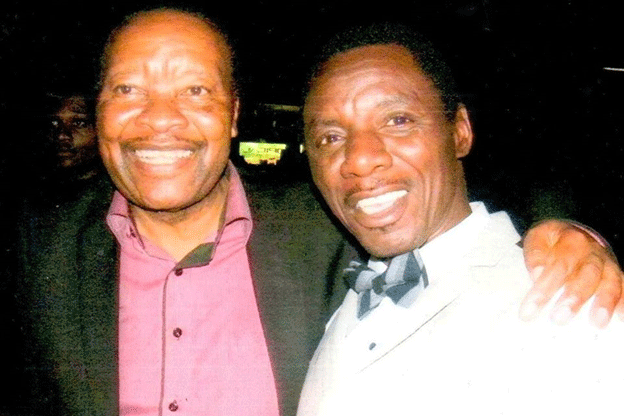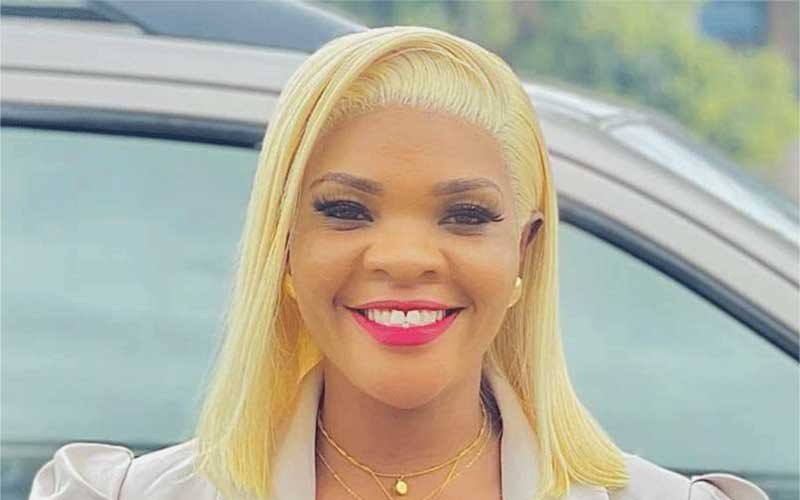
in the groove:with Fred Zindi
With the upsurge in Covid-19 cases, we are beginning to wonder what is happening among our musician superstars these days as we no longer see them at live performances. The question is: Will they continue to give the same superb performances that they did before the Covid-19 outbreak or have they stopped rehearsing altogether? One such superstar I have in mind is Alick Macheso, aka Baba Shero.
Macheso never stops to amaze me. He turned 52 on June 8 this year. After the Covid-19 pandemic, I, as one of his fans, wonder if he will still be able to give energetic performances just like before.
Even though his concerts are usually supported by a group of dancers who form part of his band, his fans expect the main man to perform his usual Borrowdale Dance gyrations on stage. After all, this is what brought him to fame.
Last year, he got injured in Guruve during a power cut. This did not help matters as performances he gave after that injury were rather lacklustre..
It makes us wonder if Macheso is still able to do his stage antics of dancing and jumping after spraining his right ankle during the show in Guruve. Although the plaster on his leg has since been removed, punters who saw his last performance in March this year say that he was not as energetic as before, perhaps due to fear that he might sprain it again. Alternatively, some think that he may not have fully recovered.
Footloose and fancy-free, because one’s duty is to entertain the people, Macheso should be careful now. If he twists his ankle again, and the audience convinces him that it’s just a sprain and at the same time he is also trying to convince them that it isn’t broken, then there is a problem. If the truth be told, it’s too late for Macheso to be 21 again.
Five years ago, before the outbreak of the Covid-19 pandemic, I wrote advising Macheso to dance more and sleep less as carefree times would soon be a thing of the past. If he still has the energy, the time to show it is after Covid-19 as everyone is anxious to see how this musician will emerge after a long break away from his expectant fans. That is reality. There will soon be a time when Macheso is older, but still trying to do the Borrowdale or Kochekera dance, which, apart from his heart-stopping thumping bassline that could stop an elephant in its tracks, as evidenced in his collaboration on Ngaibake with Freeman last year, is also his main attraction. Fans who are familiar with the Macheso shows know that when he is in full swing, he plays the bass with his teeth, chin and shoulders. When he stops doing this, expectant fans are naturally disappointed. He will just have to jump up and down again just like before if he is to remain on top of his game. Fans will expect him to continue to do it and he will be forced to do it until he twists his ankle again. The fans will try to convince him that the twisted ankle is just a sprain, even though it looks black and blue. He will only stop when he realises that it is not a sprain, but a broken ankle or when the pain begins to affect him. That is when he will realise that he is not 21 years old anymore. However, his fans must be reminded that there is still a lot more coming from the man as he prepares to give them his latest album which he is currently recording. It is this new offering that will determine whether Macheso will bounce back or not.
- Chamisa under fire over US$120K donation
- Mavhunga puts DeMbare into Chibuku quarterfinals
- Pension funds bet on Cabora Bassa oilfields
- Councils defy govt fire tender directive
Keep Reading
Of course, Macheso has still a lot of things going for him. He is a very handsome man. He can play the bass very well and still has a lot of energy. One cannot take that away from him, but imagine, 13 years from now, at 65, when he becomes an ugly, bald, wrinkled, fat-arsed, grey-haired and decrepit Macheso. You will be saying to yourself: “Oh, what a transformation from the guy who used to do all those moves during the Orchestra Mberikwazvo heyday!” So, let us allow him to burn all the energy he has while still able to do so.
Macheso, arguably The King of Sungura and Borrowdale/Kochekera Dance, was born on June 8, 1968.
He is one of Zimbabwe’s most successful singers and ranked among the best bass guitarists on the continent. He is Zimbabwe’s best-ever selling artiste with his album Simbaradzo being the highest ever sold album in Zimbabwe. Macheso is arguably the best sungura artiste to ever emerge from Zimbabwe.
In recent years he has risen to become an advertising face for many corporations that include Bakers Inn, Nash Paints and Zimbabwe Red Cross Society. Macheso’s recent achievement was his appointment as ambassador for a housing company, which deals with Enhanced Mortgaging and Housing, which targets low-income earners and self-employed clients. Macheso has also used his role to assist fellow artistes acquire residential stands at affordable rates.
He has ventured into charity and humanitarian work, for instance, in May 2019, he started building two classroom blocks at Enterprise Primary School, his former primary school in Shamva. He also offered to pay school fees for 105 less privileged pupils at the same school.
This year, Macheso during the Covid-19 crisis, will release his new album called Band reVanhu.
Macheso says it was the music of the great Devera Ngwena Jazz Band that inspired him to take up the guitar.
Since he grew up on a farm in Bindura, there was not much fun for Macheso.
It was on leaving school in 1983 that he decided to move to the capital city, Harare, to look for employment.
Finding formal employment in Harare for someone without any advanced educational qualifications became an almost impossible task. However, in 1984 things began to take shape when he joined Nicholas “Madzibaba” Zakaria to form the Khiama Boys.
With Khiama Boys, in 1984 they released their debut single Mabhawuwa. The song was an instant hit. Vocals for the song were done by the late System Tazvida. Other musicians who participated include Cephas Kurashanga and Nicholas Zacharia.
Macheso decided to splinter from the Khiama Boys in the late 1990s. Assembling Orchestra Mberikwazvo with the help of Rise Kagona, formerly of Bhundu Boys, Macheso set off a niche on the Zimbabwean music scene. Although his first two albums, Magariro in 1998 and Vakiridzo in 1999, were not phenomenal, the third album, Simbaradzo, released in 2000, proved to be a gold mine. Simbaradzo sold 350 000 copies, breaking records for album sales in Zimbabwe. Additionally, the album shot Macheso to stardom throughout Zimbabwe. Simbaradzo was to be the turning point in his career. His trademark bass-strumming technique, along with his flamboyant Borrowdale Dance, gave Macheso attention from all corners of the music industry. His follow-up to Simbaradzo titled Zvakanaka Zvakadaro in 2001 was also a success, reportedly selling 100 000 copies in its first week alone.
In 2003, another album, Zvido Zvenyu Kunyanya, was an instant hit and two years later, a follow-up album, Vapupuri Pupurai, catapulted Macheso onto the international map. Since then he has done two more albums which include Kwatakabva Mitunhu (Kure Kwekure).
Performances outside Zimbabwe have included the Southern African Summer Sunsplash Festival in London. Macheso also played alongside Papa Wemba during the Francophone Week in March 2001.
Macheso’s music is also popular in neighbouring Mozambique and they have held successful tours there.
He owes his bass guitar playing and songwriting prowess to a number of great musicians. These include Zexie Manatsa, Nicholas Zacharia, Shepherd Chinyani, Tineyi Chikupo and Cephas Karushanga.
Macheso won his first award in 1999 at the Tinotenda Siyabonga Annual Musical Awards for the Best Upcoming Artiste. The second award came in the year 2000 for the Best Sungura Artiste category. The Nama awards in the same category also followed in the years 2003, 2004 and 2005.
The question to ask now is: Without any live performances in 2020, will Macheso bounce back after the pandemic?
We wish him well! l Feedback: [email protected]











